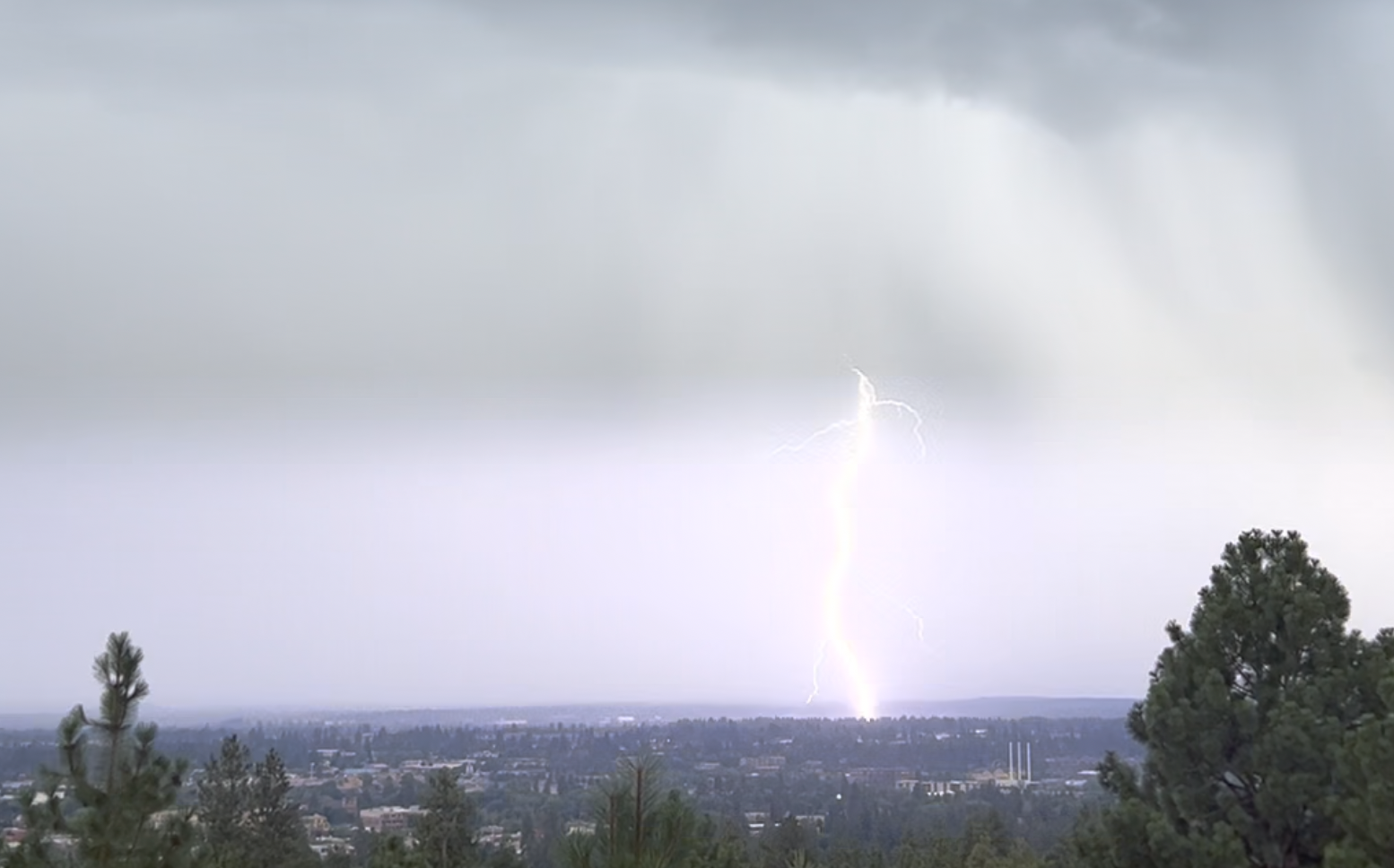How Central Oregon Community College has made its mark over 75 years
Published 5:45 am Saturday, September 21, 2024

- A construction worker on the site of Central Oregon College, later called Central Oregon Community College.
Central Oregon Community College is celebrating its 75th anniversary this year.
With four campuses in the Central Oregon region, as well as a strong emphasis on workforce development, the college has come a long way since its humble beginnings in a classroom at Bend Senior High School.
Trending
The Central Oregon community first gained the opportunity for local higher education when COCC began in 1949, the first post-high school educational institution in the region. Since its start, the college has had a major impact on the local workforce, its students, faculty and staff and the community itself.
The college began the symphony that spun off to become the Central Oregon Symphony, is known for the skiing prowess of its student athletes, and was the first community college to launch in Oregon. Among its many contributions to the workforce, careers and individuals in Central Oregon, COCC has built a decades-long record of support both for the community it serves, and from the community that built it.
A forward-thinking college
Ron Paradis, who was the director of college relations for nearly 30 years, remains amazed at the role the college has played as a crucial part of the community.
“If you talk to community leaders from way back and up through current day, they look at COCC as just being a critical pillar,” he said.
COCC’s Meal of the Year, an annual scholarship fundraiser, predates most of the major fundraisers in Central Oregon, he said. The college was involved with the creation of several known organizations in town, including the Pole Pedal Paddle and Cascades Theatrical Company.
Trending
Bob Barber, who served as president of COCC from 1990 to 2004, has been glad to see that the college has served different student populations well. The Barber Library, which opened in 1998, is named after him.
“We’ve really been able to serve the community in a very broad manner,” said Barber, 80. “It’s always been admired by a lot of other institutions, but also a little bit out of jealousy because the community has always been very supportive, financially as well as politically.”
When he arrived in 1990, his first task was to ensure the college was hooked up with personal computers.
“There was a shift in the culture of the college at the time that the community supported. It was the first college in the state of Oregon that was fully wired, and it was a statement that our area is going to be well-educated as best we can, and we’re going to support it,” he said.
He and his team began looking to expand COCC into Redmond and other communities in the early 1990s. The Redmond campus opened in 1997.
“We knew Bend was going to grow; everybody knew Bend was going to grow, so one of the things we talked about was ‘We need to start expanding our outreach,’” he said. “I think without the college being there, and helping partner with our communities, I don’t know the communities would have advanced as fast as they have.”
James Crowell, 87, took classes at COCC just as the college was getting started. He later joined the journalism faculty and served as the public information officer. He left in 1975 to work for the Brooks-Scanlon Lumber Co.
He has continued to watch the college’s programs grow.
“They are turning out, year after year after year, very qualified people. And they’re gobbled up, as I understand it, immediately. That’s one of the most fortunate outcomes at COCC is what they’ve been able to do locally,” he said.
Growing from its start in 1949
Central Oregon Community College began classes Sept. 20, 1949. Over 100 students met for night classes in the old Bend Senior High School building downtown, which is now the administration building for Bend-La Pine Schools. Students paid $3.50 per course. The college wouldn’t have a first commencement until 1955. The college’s newspaper, the Broadside, was born in 1954.
The college continued to grow. It was founded officially as a community college in the 1960s and moved from the Bend High building to its own campus in the same decade. The 1960s were a time of massive expansion for the college, with the first three buildings built in 1963 on 202 acres in west Bend, most if it donated in 1962 by Robert and Joyce Coates. In the 1966-67 academic catalogue, it changed its previous name of Central Oregon College to the one known today.
In 2011, the college opened campuses in Prineville and Madras. By 2025, an expansion of the Madras campus will be complete, which will bolster Jefferson County’s health care and early childhood educator workforce.
College’s impact on workforce
Bend Chamber of Commerce CEO Katy Brooks attended community college for two years, and feels the option is an important one.
“I just love the notion of a higher education institution whose goal is to get everybody an equal shot in a way they can afford it,” she said. “(COCC) was a big, blank hillside — beautiful hillside, but full of trees, but now it’s a beautiful hillside full of trees and higher learning. I just think it’s really great, to have a public agency take over such a large mission.”
The Bend Chamber relies heavily on the college to help fill in workforce gaps.
“If there’s anything that’s most important in my mind’s eye that I hear from our members, from businesses, is the value of the higher ed institution that can be nimble, and not take five years to develop new programs, because everything now in the workforce happens in real time,” she said.
Instructional Dean Julie Downing said the college’s workforce development programs and transfer programs have served students well. She hopes that the Madras campus expansion will bolster the workforce in Jefferson County, which has a shortage of health care workers.
“We’re hoping to fill in those vacancies and provide a high-wage, high-impact job for students in those areas,” said Downing.
As an instructional dean, she oversees health careers, nursing, public service education and disability services. She has been with the college since 1991.
Board Chairwoman Laura Craska Cooper, who has been on the board since 2012, fully believes the college’s affordable programs are instrumental to its impact on students.
“Once you can get a good-paying job, you can take care of your family, you can have a place to live independently, you really feel like you can get along with your life, which I think is really powerful for a young person or even a person coming back to school,” she said. “I think COCC provides that opportunity. It bridges the gap between high school and accessibility, affordability for a four-year institution.”
People who have well-paying jobs have the time to volunteer and participate in their communities, she said. In addition to providing jobs itself, COCC also contributes to the workforce in Crook County because graduates stay in the area to work, she said.
“If we educate them here, they’re much more likely to stay here,” she said. “We regularly consult with employers in the area to find out where do we have insufficiencies in our workforce, where do we need to be able to provide training?”
She also loves the community learning offerings, and believes them to be a well-done resource. Though she isn’t paid for it, Craska Cooper teaches a class in wine tasting at the college and has taken classes in knife skills and Italian.
A resource for the community
Current President Laurie Chesley said her main goal for the college is to leave it better than she found it when she started in 2019.
“Our main focus is, I mean, we’re created to be, a resource for the community. And everything I know about the history here, is that’s been an important part of the work for 75 years,” she said. “(Our staff are) interested in how we can continuously do better. This is not a faculty and staff who rest on their laurels. They’re all about improvement and service.”
Chesley is proud that Bend is able to support two well-regarded institutions of higher learning in COCC and Oregon State University-Cascades.
“It has been the honor of my life to serve as the president of this college. What happens here doesn’t happen everywhere,” she said. “People are good to each other; they like each other; we can have fun; we can collaborate, and we shouldn’t take that for granted at any organization.”
Much of the college’s success, Chesley believes, comes down to the community: both those who started the college and those who supported it in the decades since.
“The fact that this community was making plans 75 years ago to have its own community college, it’s sort of indicative of this region, which is, there’s a great deal of forethought and caring about what the future holds,” she said. “There’s a concern for leaving the community better than we found it. I think that’s true of the many people I’ve met here.”
Central Oregon Community College in the 2023-24 year
Credit students: 7,322
Noncredit students: 6,581
Average student age: 25.6
Faculty to student ratio: 1 to 16
Average increase in annual earnings for a graduate with an associate degree: $8,000
Central Oregon Community College plans an anniversary event from 4 p.m. to 7 p.m. May 2 in Coats Campus Center in Bend. More information can be found on the college’s anniversary website.








